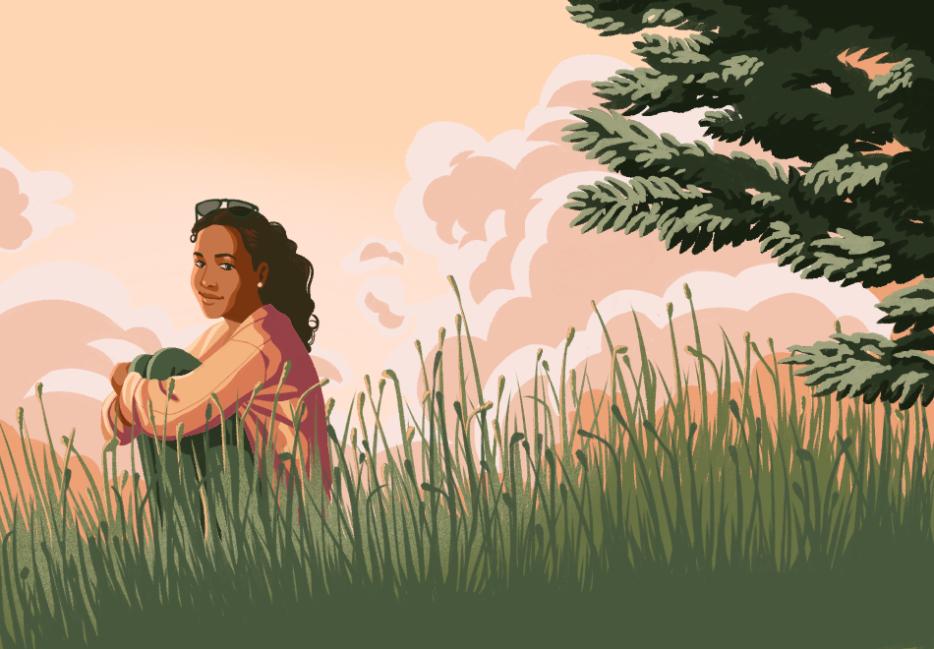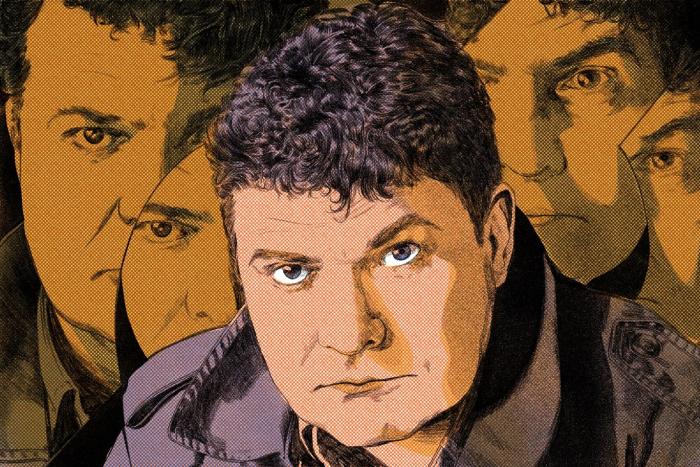Did you know Joyce (Carol) Vincent?” reads an ad in a London newspaper. The notice placed by documentarian Carol Morley was just a tiny box in the middle of the page, easy to miss, dwarfed by the ads that surrounded it. Not much was offered in the way of a physical description. It noted only Vincent’s place of birth (Hammersmith), her birth month and year (October 1965), where she went to school growing up (Melcombe Primary, Fulham Gilliatt Girls School), and places where she had worked (OCL, C. Itoh, Law Debenture, and Ernst & Young).
Morley was looking for anyone who could help her fill the elliptical spaces that occupied the story of Joyce Carol Vincent, a young Black woman who died at the age of 38, alone in her London flat, in 2003, not to be discovered until three years after her death.
The group of people who responded to Morley’s ad included former lovers, colleagues, and classmates of Joyce. Thus was Dreams of a Life created.
In the 2011 documentary, Morley makes do with what little details she has about Joyce, excavating them to try to piece together the puzzle of her final days.
Here’s what Morley finds out: Joyce was one of five girls. (“Four sisters?! Four sisters?!” one of the men in the documentary blurts.) Her father was a West Indian man from a working-class background who Joyce apparently called “pork pie”—a reference to the hat that West Indian men would often wear. Of her father, one of Joyce’s acquaintances recalls that Joyce said he would “chat up young girls and basically thought he was still in his twenties.”
The film sporadically touches on Joyce’s identity as a biracial Black woman. Some of the mostly white participants surmised that Joyce didn’t particularly care too much about the topic of race. (“I don’t think she was into the race thing.”)
Joyce’s romantic life brought further attention to the clumsiness in the way the people around her dealt with her racial identity. Three of the men—a white man and two Black men—featured in Dreams of a Life claimed to be in a romantic relationship with her at various points in Joyce’s life. “I do remember on some occasions of some Black people saying: what’re you doing with a white honkey,” one of the white participants said. Another participant, a Black woman, said that she jokingly told Joyce: “Yeah, what you need is a good Black man.”
There was one thing about Joyce that everyone could agree about, and that was how beautiful she was. Portrayed in re-enactments by actress Zawe Ashton, Joyce had dark curly hair and tawny brown skin. “She was pretty, and she was full of life,” one of the men in the documentary said.
Hearing the people who knew Joyce speak, even if only briefly, adds to a horror that grows throughout viewing Dreams of a Life. It becomes clear that despite her charisma and beauty, viewers, participants, and Morley alike are no closer to answering the central question: Why did Joyce die alone? And further, how can any of us evade the same fate?
*
I wonder if, at any point in the quiet hums between the bustling noise of her life Joyce could feel the looming presence of loneliness creep in on her? In the same way that, despite its best efforts to keep the sky filled with light, the sun still succumbs to a nightly recession into darkness.
I was just eighteen when I learned about Joyce. I was in the midst of what felt like a deep grieving. I spent days crying at the hollowness that had become my life. I was home attending a local community college as everyone I knew from high school had left. Hearing about Joyce’s death felt like a preview of what was to come for me.
The way that her peers spoke of her impossible beauty and her magnetism made me feel even more pessimistic about a future in which I could receive the care and community I longed for. No one had ever described me in a way that made me feel desired or adored. I felt like unless I could offer the world beauty and a body worth loving, loneliness would be all I would ever know. That was, until I learned about Joyce.
More than our lonesome predicament bounded Joyce and me together. There was our shared estranged relationship from our families. There was our desire to pursue the arts—I’m a writer, Joyce was a singer.
There was a familiarity in the ways people talked about her race. Even as a lighter-skinned biracial woman, her Blackness proved to be a point of contention among the white people who spoke about her. Living life under the constant leering gaze of a whiteness that would never try to see you for who you fully are is a loneliness that I’ve been intimately intertwined with.
Integration wasn’t available to me as someone who doesn’t have the lighter complexion and thin body that Joyce had. I was constantly subjected to whiteness’s shrinking gaze. I remember the ways I could feel myself dwarf under the constant judgment of others. I remember how my body often became a target for humiliation and for a pleasure that I could not join in on.
But even with her social fluidity, Joyce still experienced the violence that comes from being the circle trying to fit into a square peg. When you’re desired in the cannibalistic way that only whiteness can desire you, you are taken apart by your limbs. They can take your flesh for their own titillation.
In one of the most revealing moments in Dreams of a Life, the participants learn of Joyce’s brief stint at a shelter for battered and abused women. “The domestic violence doesn’t surprise me,” one of the female participants says. “Guys were just so focused and possessive with her.”
Some of the participants pointed to Joyce’s affable and trusting nature to explain why she seemed to be drawn to bad people. “We’ve all made stupid choices in our life, but hers were tragic,” one of the male participants said. He continued: “Why did she gravitate to bad people? She was a very bright girl.”
Increasingly, it becomes clear that no one really knew Joyce. In all the versions people had of her, there seemed to be so little room left for who she really was. Whether it was self-preservation or sheer lack of genuine care that kept Joyce from opening up to anyone in her life, it seemed like loneliness was always bound to catch her.
Dreams of a Life offers no reprieve to those looking to avoid the fate that Joyce met. No voice of God thundering from above telling you how you can avoid loneliness’s raging grasp. In the end, all the love and adoration that Joyce received on this side didn’t save her.
When they found what was left of her body, sitting in front of a still-buzzing TV, gifts that she had been wrapping rested right beside her. Authorities surmised it was December when she died, as that was the last time anyone had seen her. She spent her last moments alive preparing to bring a joy she would never receive to others.






